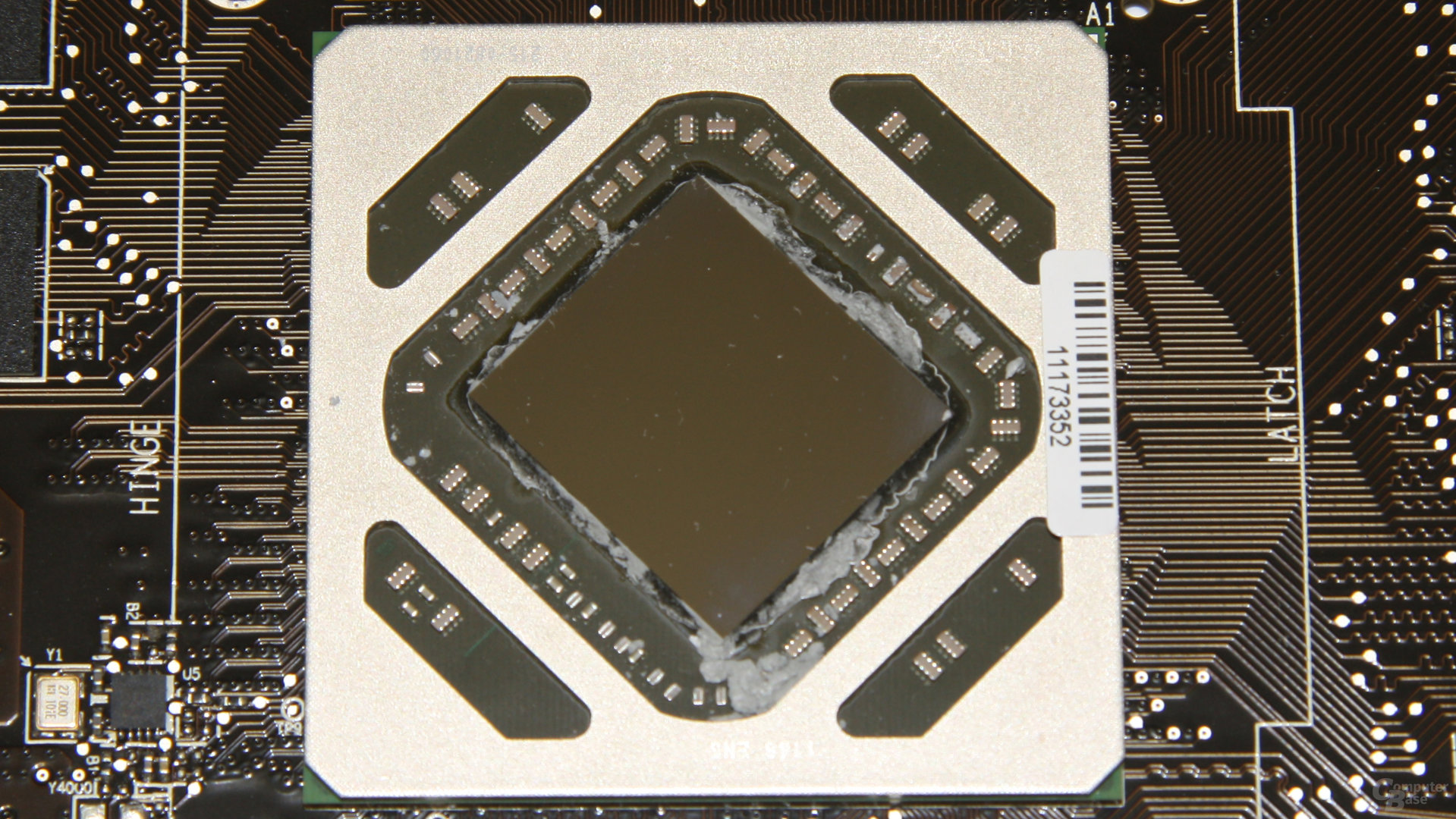AMD Radeon HD 7970 im Test: Neue Radeon-GPU weiß zu überzeugen
2/24Technischer Überblick
Technische Eckdaten
Bevor wir uns mit der Tahiti-GPU und ihrer Architektur im Detail beschäftigen, möchten wir mit den obligatorischen Spezifikationen des neuen Chips starten.
| Radeon HD 6970 |
Radeon HD 6990 |
Radeon HD 7970 |
GeForce GTX 580 |
|
|---|---|---|---|---|
| Logo |  |
 |
 |
|
| Chip | Cayman | 2x Cayman Antilles |
Tahiti | GF110 |
| Transistoren | ca. 2,64 Mrd. | 2x 2,64 Mrd. | ca. 4,31 Mrd. | ca. 3 Mrd. |
| Fertigung | 40 nm | 40 nm | 28 nm | 40 nm |
| Chiptakt | 880 MHz | 830 MHz | 925 MHz | 772 MHz |
| Shadertakt | 880 MHz | 830 MHz | 925 MHz | 1.544 MHz |
| Shader-Einheiten (MADD) |
384 (4D) | 2x 384 (4D) | 2.048 (1D) | 512 (1D) |
| FLOPs (MAD) | 2.703 GFLOPS | 2x 2.550 GFLOPS | 3.789 GFLOPS | 1.581 GFLOPS |
| ROPs | 32 | 2x 32 | 32 | 48 |
| Pixelfüllrate | 28.160 MPix/s | 2x 26.560 MPix/s | 29.600 MPix/s | 24.704 MPix/s |
| TMUs | 96 | 2x 96 | 128 | 64 |
| TAUs | 96 | 2x 96 | 128 | 64 |
| Texelfüllrate | 84.480 MTex/s | 2x 79.680 MTex/s | 118.400 MTex/s | 49.408 MTex/s |
| Shader-Model | SM 5 | SM 5 | SM5.1 | SM 5 |
| effektive Windows Stromsparfunktion |
✓ | ✓ | ✓ (ZeroCore) | ✓ |
| Speichermenge | 2.048 MB GDDR5 | 2x 2.048 MB GDDR5 | 3.072 MB GDDR5 | 1.536 MB GDDR5 |
| Speichertakt | 2.750 MHz | 2.500 MHz | 2.750 MHz | 2.004 MHz |
| Speicherinterface | 256 Bit | 2x 256 Bit | 384 Bit | 384 Bit |
| Speicherbandbreite | 176.000 MB/s | 2x 160.000 MB/s | 264.000 MB/s | 192.384 MB/s |
| Stromangaben Typisch/Maximal |
190/250 Watt | 415/450 Watt | 210/250 Watt | 244/? Watt |

CB-Funk Podcast #66: EKWB am Abgrund, arm(e) AI-PCs und Benchmarks en masse mit  Fabian und
Fabian und  Jan-Frederik
Jan-Frederik
